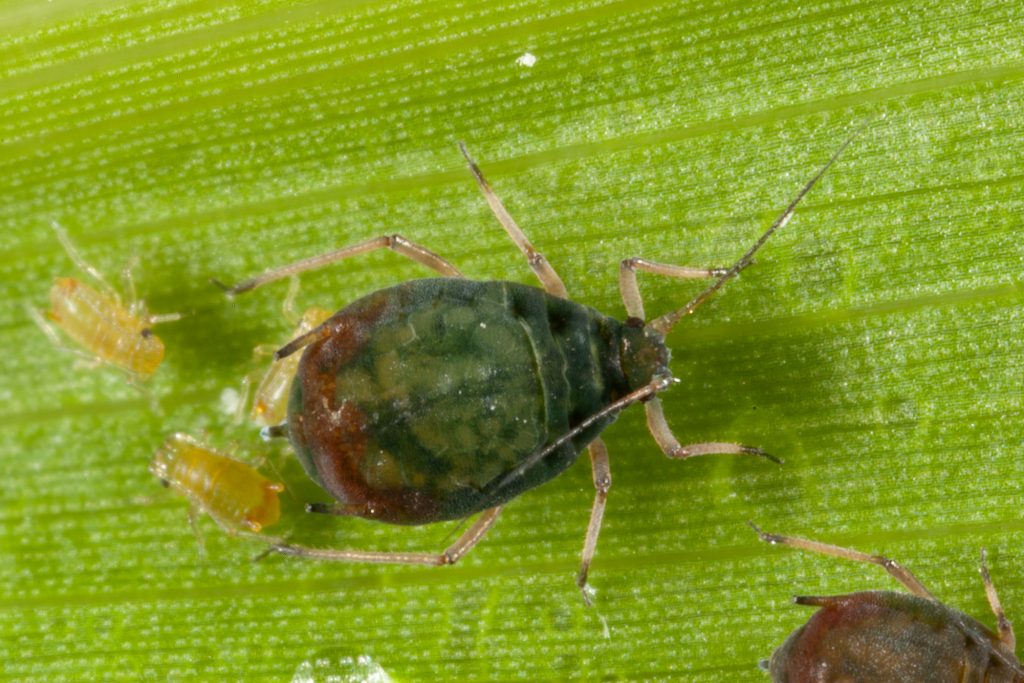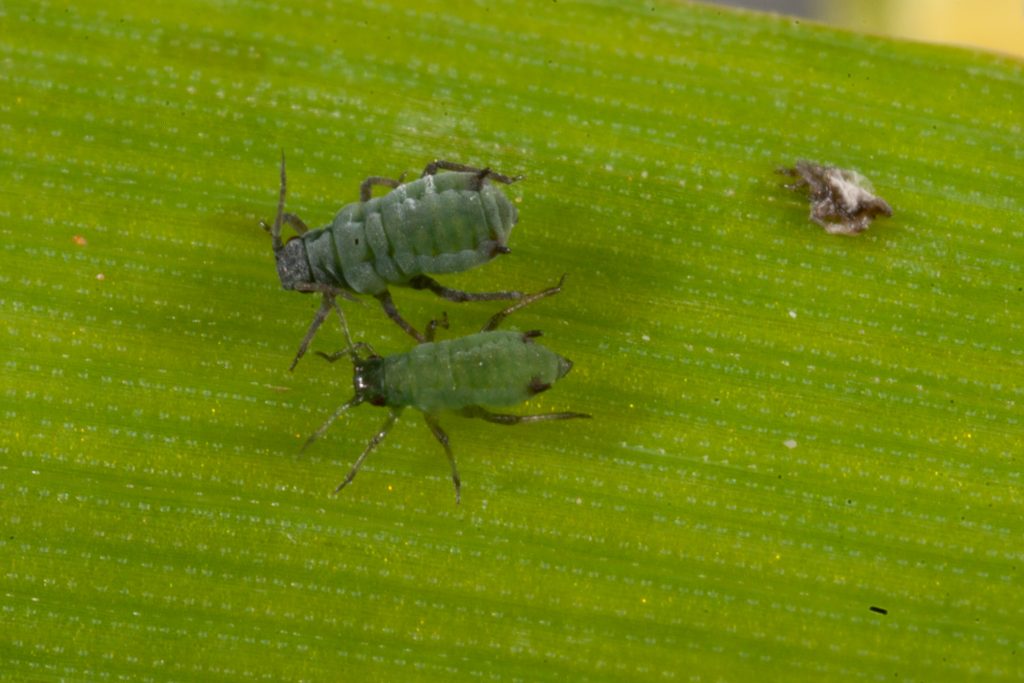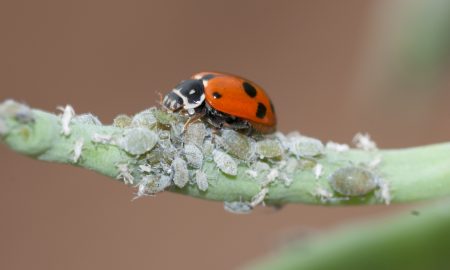Cereal aphid reports have been relatively common but, with a potentially dry spring looming, there are management dilemmas to be considered.
Where have they been reported?
Cereal aphids (corn aphids and oat aphids) have been found in a large number of cereal crops in the Victorian Mallee, Victorian Northern Country and New South Wales Riverina. The severity of infestations ranged from moderate to severe, and control was required in at least one wheat crop at Conargo in New South Wales.
In a couple of instances, we have had reports of cowpea aphids attacking cereal crops, however, the identification of these has not been verified and it is quite possibly a case of confusion with darker variants of oat aphid.
Cowpea aphids are mostly found in medics, vetch and other winter legume and pulse crops, but are usually not known in cereals. We would appreciate hearing from people observing cowpea aphids on cereals.
About cereal aphids
The two common aphid species found in cereal crops are the oat aphid (Rhopalosiphum padi) and the corn aphid (Rhopalosiphum maidis). Although oat aphids are mostly found on oats and wheat, and corn aphids are more common on barley, both species may attack all cereals. Rose-grain aphids (Metopolophium dirhodum) also occasionally appear in wheat.
Oat aphids and corn aphids can be distinguished in the field relatively easily. Corn aphids have an oblong shaped, light green to olive-coloured body with two dark areas on the abdomen near the base of the siphuncles. Oat aphids have a pear-shaped body and are olive-green to almost black in colour with a rusty red patch at the end of the abdomen. The antennae of corn aphids extend about a third of the length of their body, while the antennae of oat aphids extend about half the length of their body.
For comprehensive information on cerealaphids, including their occurrence, lifecycle, behavior and management strategies, go to the corn aphid and oat aphid within the new PestNote series.


Our advice
We recommend monitoring cereal crops for the presence of aphids, especially as the weather becomes warmer.
If the forecasted dry spring was to eventuate, more rapid aphid development and greater population growth is likely to occur.
Representative parts of the entire crop should be checked before September, and again before October.
The decision on the need for and timing of a spray is complex and involves trade-offs.
Spraying early will manage populations before they cause too much feeding damage.
But the use of broad-spectrum insecticides, particularly so early in the season, will eliminate beneficial insects and may result in a secondary, potentially more destructive infestation later in spring. This is especially so if the predicted dry weather conditions prevail, which will suit aphids.
If chemical control is warranted, selective insecticides (pirimicarb) are recommended as they are less harmful to beneficial insects and are less likely to induce a secondary outbreak. Beneficials invariably play an active role in keeping aphid populations in check, even though their presence is often overlooked.
Finally, identifying aphids using their colour alone is often misleading because aphid species often have a diverse range in colour.
cesar and GRDC have released a Back Pocket Guide containing descriptions of 11 key crop aphid species found in Australian broadacre systems. Keep the guide on your phone or tablet by downloading it from: http://www.grdc.com.au/CropAphidsBackPocketGuide
Acknowledgements
Sources of field reports of cereal aphids
Chris Dunn – Agronomist, Landmark (Victoria’s Northern Country)
Hayden Lunn – Agronomist, Landmark (New South Wales Riverina)
Andrew McMahen – Agronomist, Landmark (Victorian Mallee)
Justin Whittakers – Agronomist, Landmark (New South Wales Riverina)
Kate Wilson – Agronomist, AgriVision (Victorian Mallee)
Cover image: Photo by Andrew Weeks, Cesar Australia





